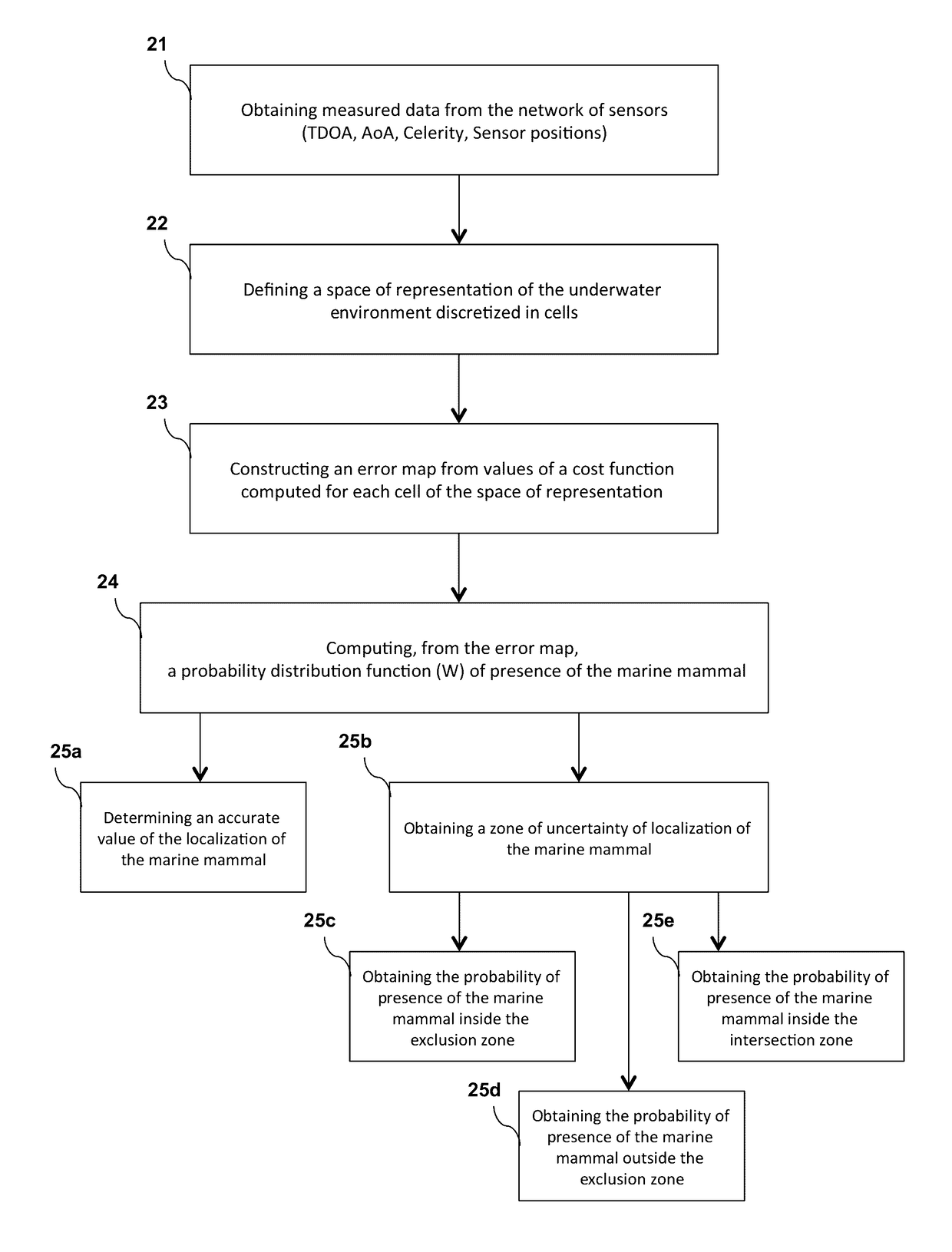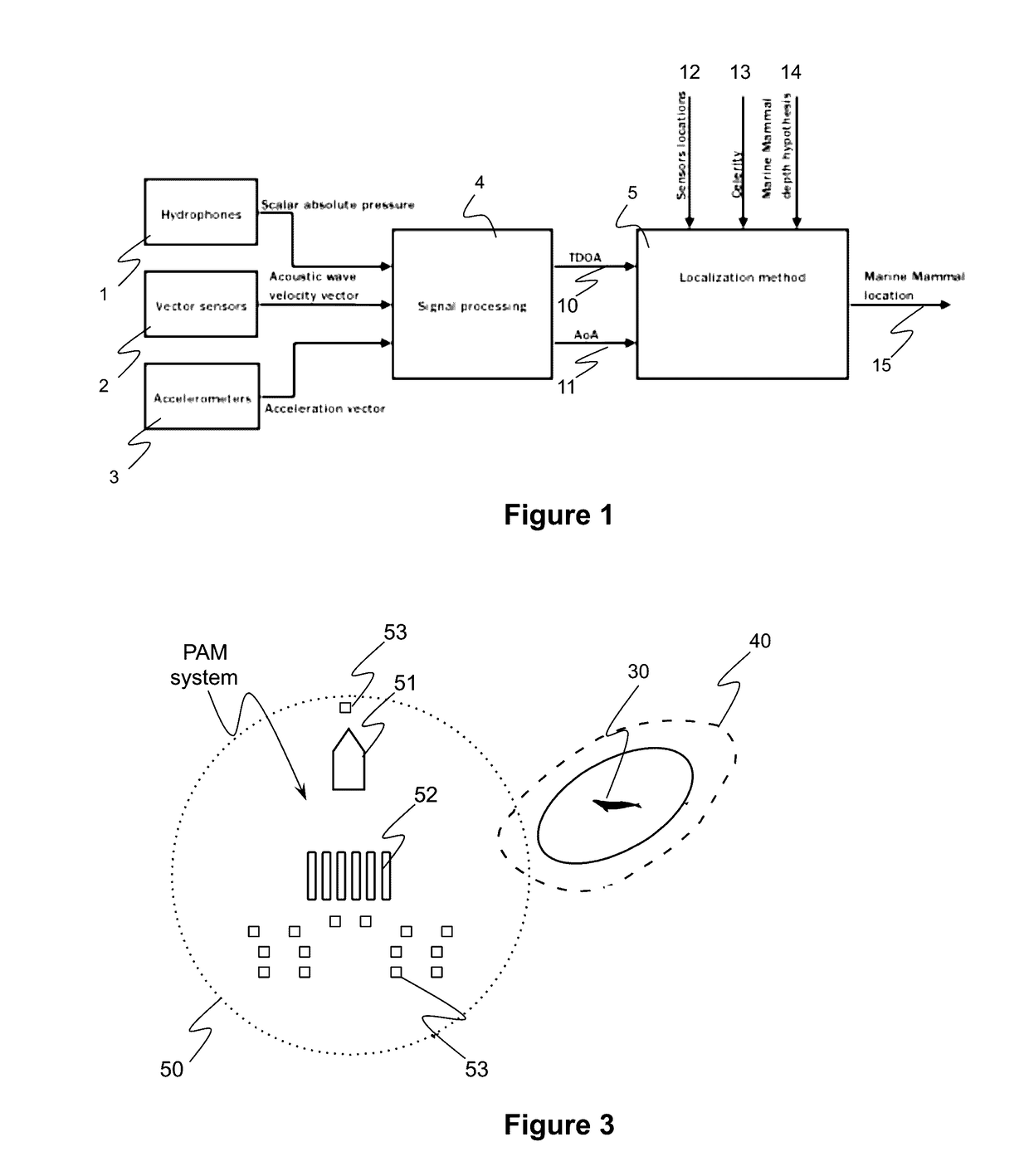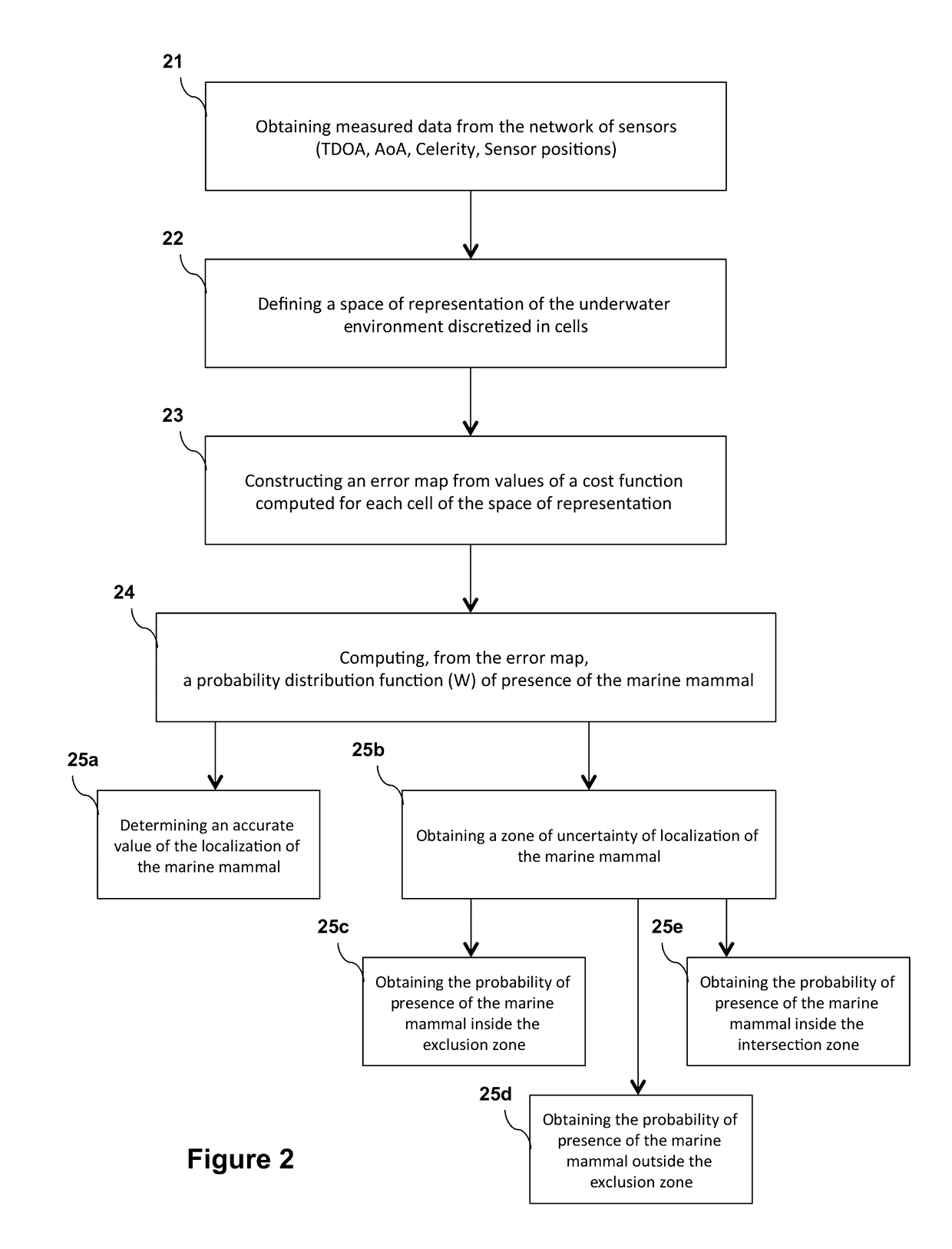Method for localizing a marine mammal in an underwater environment implemented by a PAM system, corresponding device, computer program product and non-transitory computer-readable carrier medium
a marine mammal and monitoring system technology, applied in seismology, directions using ultrasonic/sonic/infrasonic waves, instruments, etc., can solve the problems of increasing uncertainty, introducing significant errors in localization computation, and all measured data used by known localization methods are generally affected by errors, so as to achieve the effect of easily computing errors
- Summary
- Abstract
- Description
- Claims
- Application Information
AI Technical Summary
Benefits of technology
Problems solved by technology
Method used
Image
Examples
Embodiment Construction
[0088]In all of the figures of the present document, identical elements and steps are designated by the same numerical reference sign.
[0089]In the example described below, we consider the localization of a marine mammal in the context of a sea oil survey.
[0090]Referring now to FIG. 2, we present a localizing method according to a particular embodiment of the invention. This method is carried out by a device (the principle of which is described in detail below in relation with FIG. 6).
[0091]As illustrated on FIG. 3, we consider a PAM system comprising a plurality of acoustic sources 52 and a network of acoustic sensors 53 adapted to carry out measurements of acoustic signals. The acoustic sensors (represented by white boxes) are arranged along several streamers (acoustic linear antennas) towed by a seismic vessel 200. These acoustic sensors could be positioned in the survey equipment as well such as on the airguns array, head or tail buoy. The acoustic sensors 53 are of the following...
PUM
 Login to View More
Login to View More Abstract
Description
Claims
Application Information
 Login to View More
Login to View More - R&D
- Intellectual Property
- Life Sciences
- Materials
- Tech Scout
- Unparalleled Data Quality
- Higher Quality Content
- 60% Fewer Hallucinations
Browse by: Latest US Patents, China's latest patents, Technical Efficacy Thesaurus, Application Domain, Technology Topic, Popular Technical Reports.
© 2025 PatSnap. All rights reserved.Legal|Privacy policy|Modern Slavery Act Transparency Statement|Sitemap|About US| Contact US: help@patsnap.com



